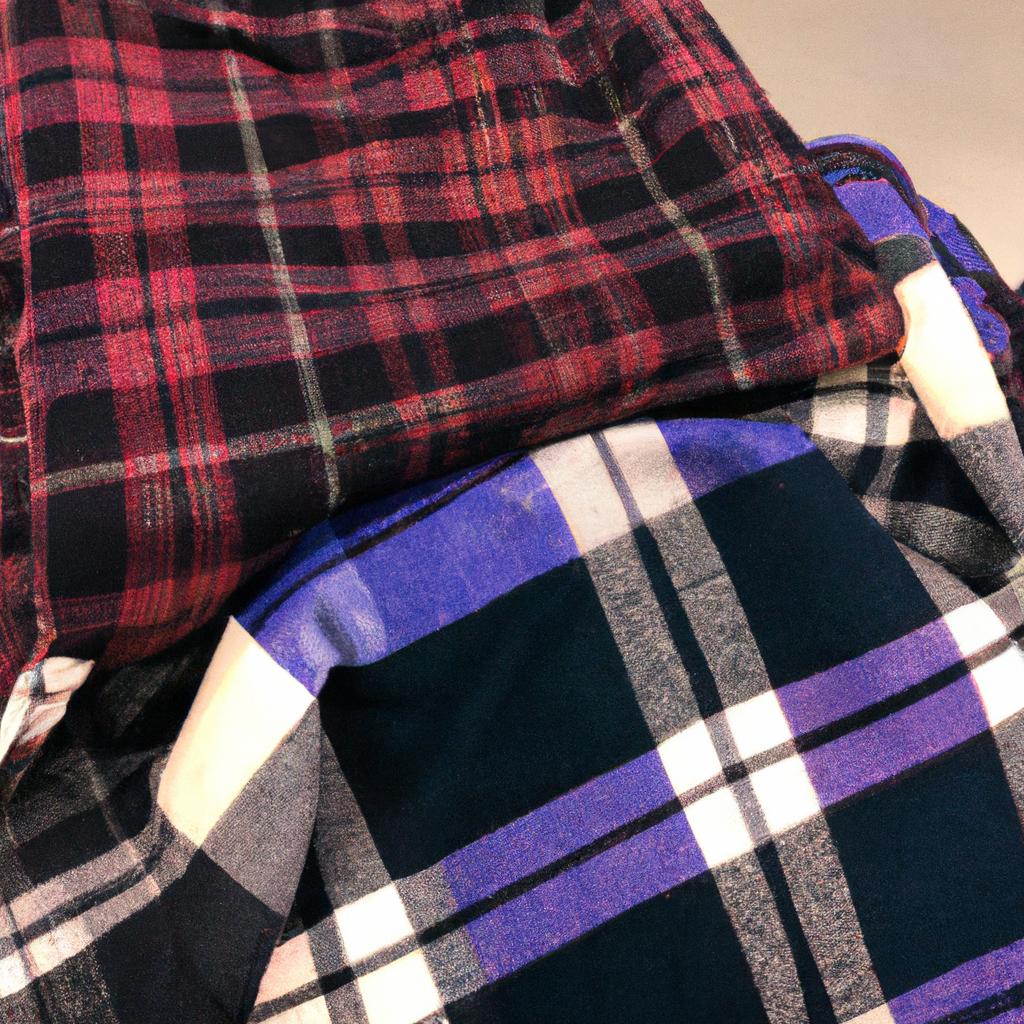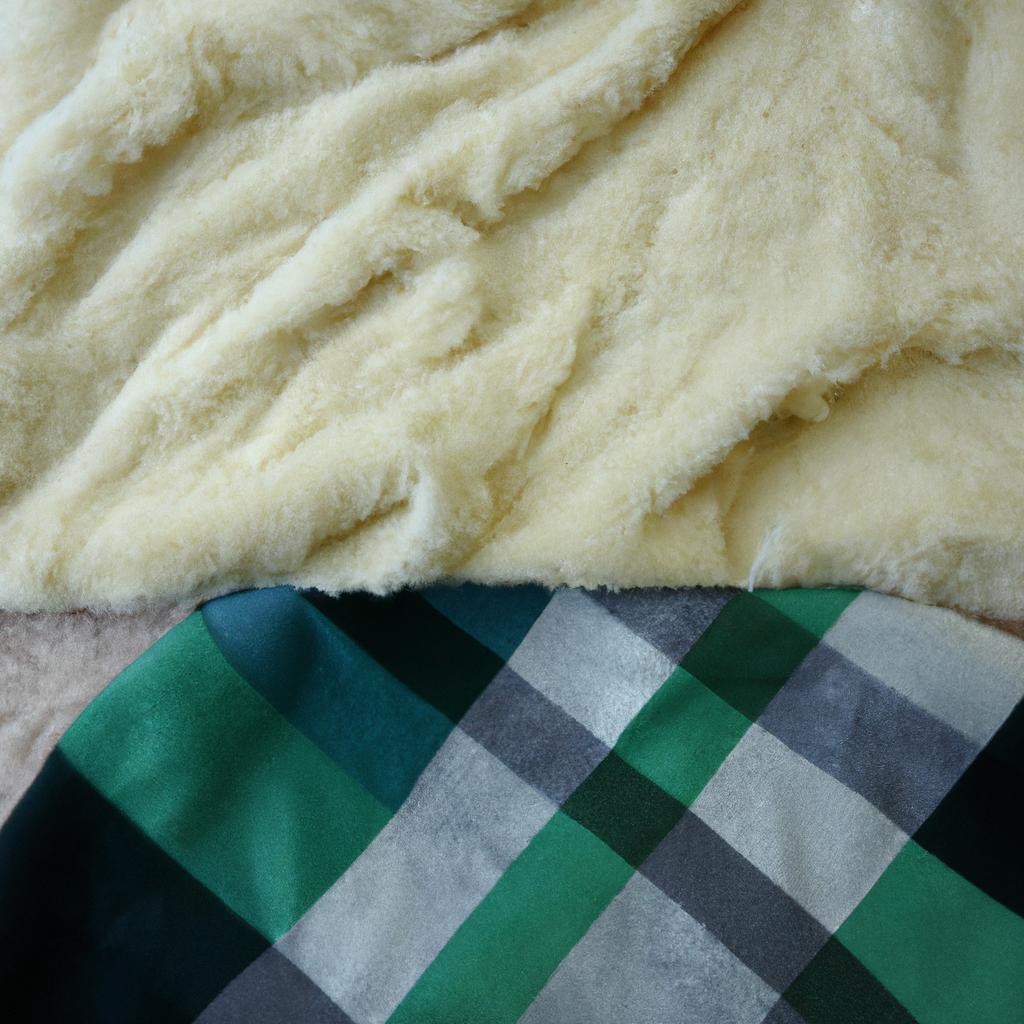Ah, the age-old debate: flannel or fleece? It’s a question that has perplexed outdoor experts for generations.
Fleece is generally warmer than flannel, as it is made from fluffy synthetic materials that provide better insulation and moisture-wicking properties. However, the warmth of both materials can vary depending on their quality and thickness. To maximize warmth, choose high-quality, thick fabrics for either flannel or fleece.
As an experienced outdoorsman, I’m here to tell you that there is no one-size-fits-all answer when it comes to staying warm in the great outdoors! Let me break down the pros and cons of each fabric so you can make the best decision for your next camping trip.
The main distinction between flannel and fleece lies in their respective weights. Flannel offers more insulation than its lightweight counterpart, making it ideal for cold weather conditions.
On the other hand, if you’re looking for something lighter and more breathable on those warmer days out in nature, then fleece is definitely the way to go.
Both fabrics will keep you nice and cozy while engaging with Mother Nature – just pick which suits your needs better!
Definition Of Flannel And Fleece
Flannel and fleece are two of the most popular fabrics used in outdoor apparel.
Did you know that an estimated 80% of people prefer one or both of these fabrics when they’re lounging around a campfire?

Both flannel and fleece are great for layering, offer breathability, come in different fabric types depending on your needs and preferences – but there’s more to each than meets the eye.
Let’s take a closer look at what sets them apart from one another by comparing their costs, washing instructions, and potential for layering.
Pros And Cons Of Each
There are many factors to weigh when it comes to deciding between flannel and fleece for outdoor apparel. Durability, cost effectiveness, fabric types, cleaning methods, and style options should all be considered before making a purchase decision.
When comparing durability of the two fabrics, consider how often you plan on wearing them outdoors as well as what kind of activities you will be doing while wearing them.
Flannel is usually more resistant to wear-and-tear than fleece due to its heavier weight construction; however, this can also mean that it may not be suitable in hot weather conditions.
Fleece on the other hand is light and breathable, so it may provide better comfort during periods of high activity or heat exposure.
Furthermore, both fabrics have unique cleaning requirements depending on their composition. For instance, flannels made from wool or cotton need special care instructions such as dry clean only or machine wash cold with gentle detergent whereas synthetic fleeces tend to be easier to clean because they don’t shrink or lose shape over time.
As far as style options go, there are lots of different colors and patterns available in both varieties so you can find something that fits your personal taste without sacrificing function.
No matter which one you choose – whether classic plaids for flannel or sleek solids for fleece – understanding these key differences can help make sure you get the best product at an affordable price.
Temperature Rating Of Each
Flannel and fleece are two classic choices for layering techniques that strike a perfect balance between warmth, breathability, and durability. Like two sides of the same coin, they both offer unique advantages as well as drawbacks in terms of fabric care, price ranges, environmental impact, and other considerations.

When it comes to temperature rating, flannel has one indisputable advantage – its natural insulation is designed to keep you cozy even when temperatures dip below freezing.
Fleece on the other hand is lightweight and offers better breathability than traditional wool fabrics but isn’t quite as warm. So if you’re looking for an all-weather insulator with superior comfort, then flannel may just be your best bet.
That said, there are still plenty of factors to consider when choosing between these two options…
Factors To Consider When Choosing Between Flannel And Fleece
When it comes to choosing between flannel and fleece, there are a few factors to consider.
So when making your decision between flannel and fleece, take into account:
1. Cost Comparison
2. Breathability
3. Durability
4. Weight & Styling Options
5. Versatility for different occasions.
First of all, cost comparison is important; both materials can be found at various price points depending on the quality you’re after.
Next, breathability should be taken into account – not just in terms of how much air passes through the fabric itself but also how well it wicks away moisture from your skin.
Durability is another consideration, as cheap versions may wear down quickly while higher-end options will last longer.
Additionally, weight matters – if you’ll be traveling with either material, then look for something lightweight yet still durable enough to withstand some wear and tear without compromising its warmth.
Finally, styling options come into play since these two fabrics have different looks that appeal to different people: flannel has a classic plaid pattern whereas fleece offers more modern solid colors and designs.
Frequently Asked Questions
What Is The Difference Between Flannel And Fleece Fabrics?
The great debate of flannel versus fleece is a long-standing one, and deciding between the two can be tricky. As an outdoor expert in seasonal wear, it’s important to understand that each fabric offers its own unique set of benefits.
When considering insulation properties, breathability, cost effectiveness, sustainability and seasonal wear – there are advantages for both fabrics.
Flannel is typically heavier than fleece but provides excellent warmth with relatively low costs; however, it’s not as breathable as fleece so may need to be layered more often during extended use.
Fleece on the other hand is lightweight yet still offers superior insulation while also being highly breathable – making it perfect for unpredictable weather conditions.
Ultimately, when choosing between flannel or fleece you should consider your climate and budget before selecting which will work best for you!
How Durable Are Flannel And Fleece Fabrics?
Both flannel and fleece fabrics are surprisingly durable, offering a range of benefits that make them great choices for any outdoor adventure.
From breathability to water resistance and wrinkle-resistance, these materials offer the best in sustainability and warmth retention.
Whether you’re looking for something warmer or cooler temperature wise, both flannel and fleece fabrics provide an excellent way to enjoy your freedom outdoors!
How Easy Is It To Clean And Care For Flannel And Fleece Fabrics?
Caring for your flannel and fleece fabrics isn’t a chore – it’s an opportunity.
Dry cleaning is the preferred option, although you can machine wash both materials on a delicate cycle with cold water.
However, if possible, never use fabric softener as it will diminish insulation properties necessary to keep you warm in the outdoors.
In addition, choosing the right fabric blend is key when selecting between these two cozy options: breathability is essential to prevent overheating while styling options are endless depending on desired look and comfort level.
Are Flannel And Fleece Fabrics Safe For Sensitive Skin?
If you’re looking for fabrics that won’t cause an allergic reaction, flannel and fleece are both great choices.
As an outdoor expert, I can attest to the fact that these materials are designed with sensitive skin in mind – avoiding irritating synthetic materials like polyester.
Additionally, certain fabric softeners may help prevent shrinkage without compromising sustainability implications.
In short, when it comes to keeping your skin safe while enjoying nature’s beauty, there’s no better option than flannel or fleece.
Are There Any Environmental Considerations When Choosing Between Flannel And Fleece Fabrics?
As an outdoor expert, I’m often asked which fabric is more eco-friendly: flannel or fleece.
There are several considerations to make when choosing between these two fabrics.
When it comes to production, look for brands that use solar powered dyeing and sustainable sourcing methods.
Animal welfare should also be taken into account since some processes involve animal byproducts.
Additionally, while both of these fabrics can be recycled, it is important to find out if the brand you’re looking at offers recyclable materials in their product line as well.
Ultimately, with a little bit of research on each fabric’s environmental impact, you can invest in something that will help preserve our planet for years to come!
Conclusion
When choosing between flannel and fleece for a warm, cozy piece of clothing the decision can be difficult. To help make that choice easier, it is important to consider all aspects of both fabrics.
Flannel is soft and durable but not as easy to clean or care for, while fleece is more expensive but easier to maintain. Both are safe for sensitive skin and have minimal environmental impacts when made from recycled materials.
At the end of the day, deciding between flannel and fleece comes down to personal preference and lifestyle needs. I would suggest taking some time to explore each fabric in person before making your selection; this will give you an opportunity to feel how they look and fit on you.
If you’re looking for something lightweight yet warm, go with the fleecy option – like wrapping yourself up in a cloud! On the other hand, if durability and coziness are your main concern then opt for a classic flannel shirt or blanket – perfect for curling up beside a campfire during those chilly evenings spent outdoors.




